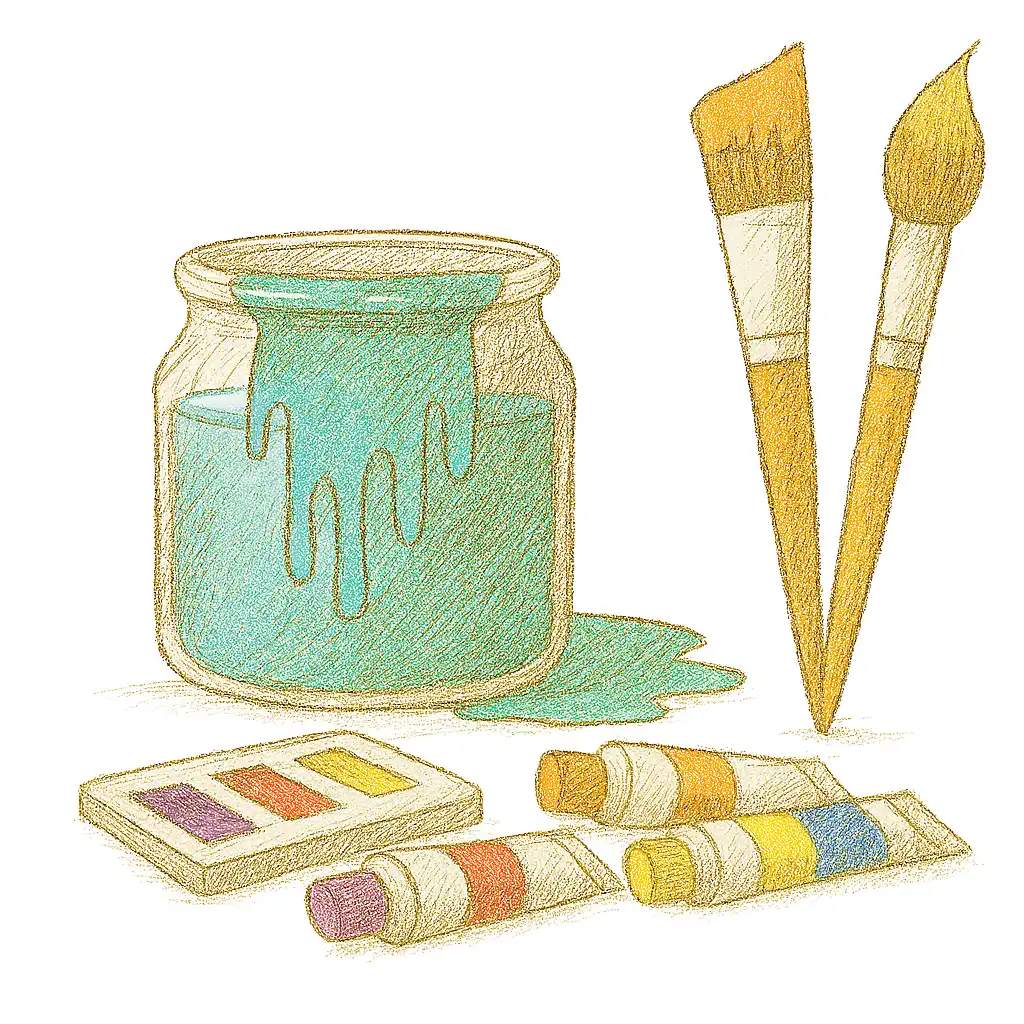1. Which watercolour paints are best for beginners?
For beginners, student-grade sets like Winsor & Newton Cotman are ideal. They’re affordable, easy to use, and offer vibrant colours without overwhelming you with too many options. Starting with a 12–24 colour set is usually enough to learn basic techniques.
2. What is the difference between student-grade and professional-grade watercolours?
Student-grade paints have less pigment concentration and may be less lightfast than professional paints, but they’re perfect for learning and experimenting. Professional-grade paints, like Daniel Smith or Schmincke, have high pigment load, superior blendability, and long-lasting vibrancy.
3. How many colours do I need in a set?
A 12–24 colour set covers most basic painting needs. Beginners can mix secondary and tertiary colours from a limited palette. Professional artists often prefer larger sets (24–48 colours) for more precise work and special pigments.
4. Are tube paints better than pan paints?
It depends on your painting style. Tube paints are great for large washes or mixing large amounts of colour, while pan paints are compact, portable, and ideal for travel or smaller projects. Many artists use a combination of both.
5. How can I tell if watercolours are lightfast?
Lightfastness indicates how long a colour maintains its vibrancy when exposed to light. Most reputable brands label their paints with a lightfast rating. Professional-grade paints usually have excellent lightfastness, which is important if you plan to sell or display your artwork.
6. Which brushes work best with watercolours?
Synthetic or natural sable brushes work well. Round brushes in sizes 6–12 are versatile, while flat brushes are useful for washes. Always choose brushes that feel comfortable in your hand and hold enough water and pigment.
7. Can watercolour paints be used outdoors or for travel?
Yes! Compact pan sets like Schmincke Horadam Half Pans are perfect for plein air painting. Tube sets can also work, but pans are easier to transport and less likely to spill.
8. How should I store watercolour paints?
Keep your paints in a cool, dry place, and close the caps tightly on tubes or keep pans covered. This prevents drying out and extends their lifespan. Pans that dry can often be reactivated with a few drops of water.
9. Are professional watercolours worth the extra money?
Professional paints are richer in pigment, more durable, and offer better lightfastness. If you’re serious about your art or plan to sell your work, investing in a quality set like Daniel Smith Extra Fine Watercolours is worthwhile.
10. What papers are best for watercolour painting?
Use 100% cotton watercolour paper with 200–300 gsm for best results. Cold-pressed paper is versatile and works well for beginners and professionals alike. Avoid thin or low-quality paper, which can buckle or tear easily.

